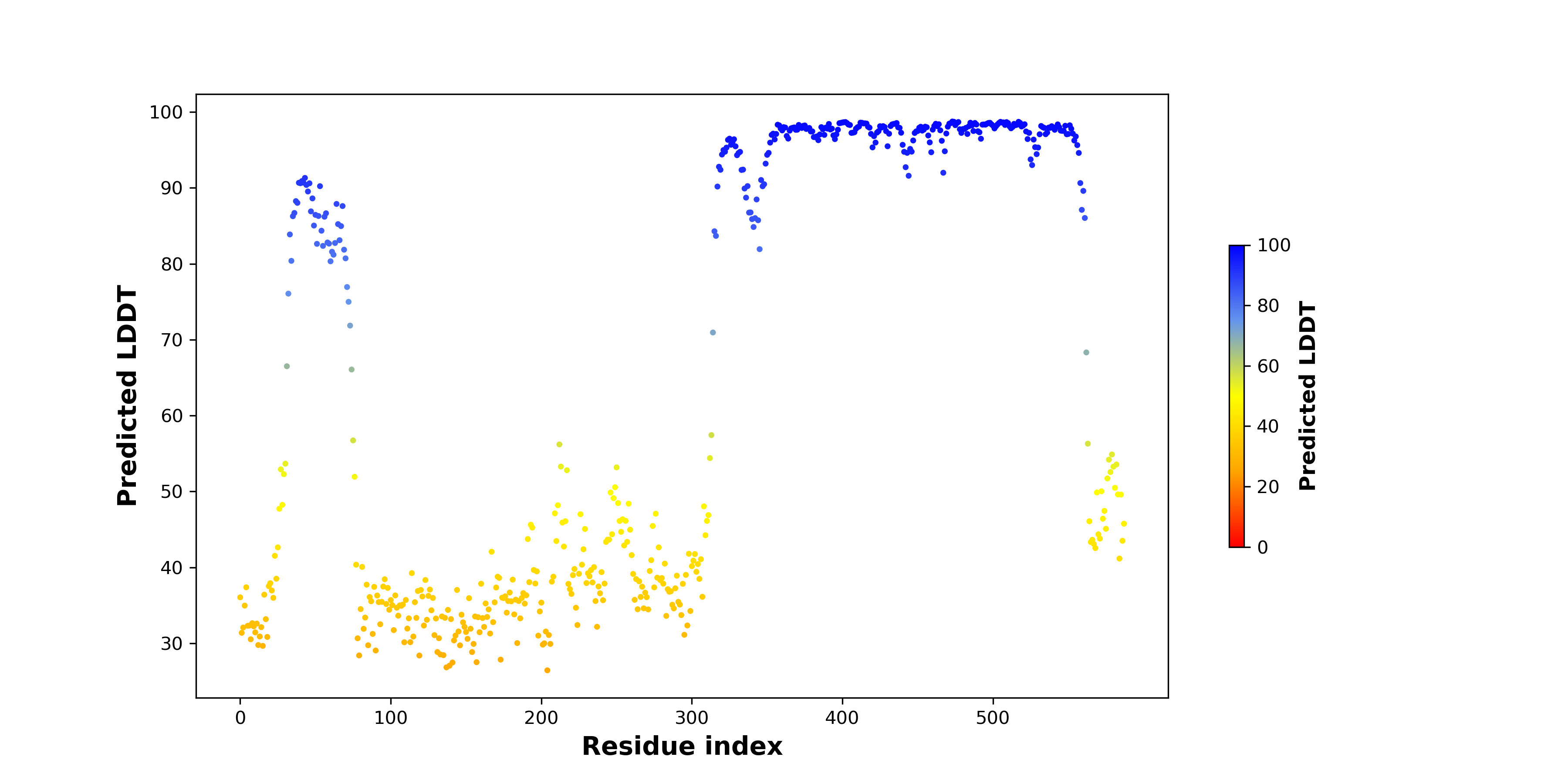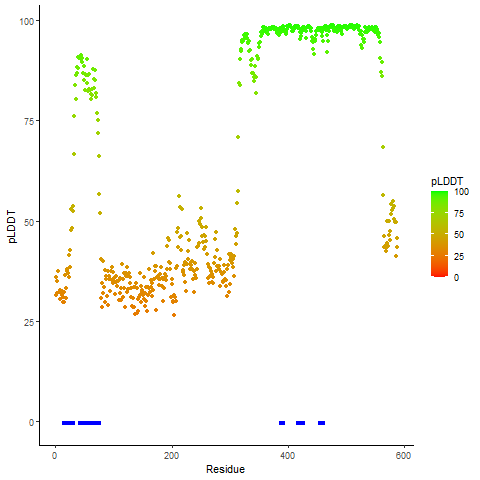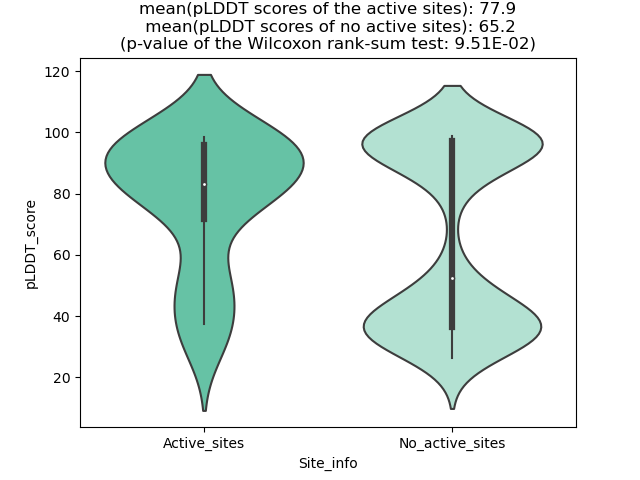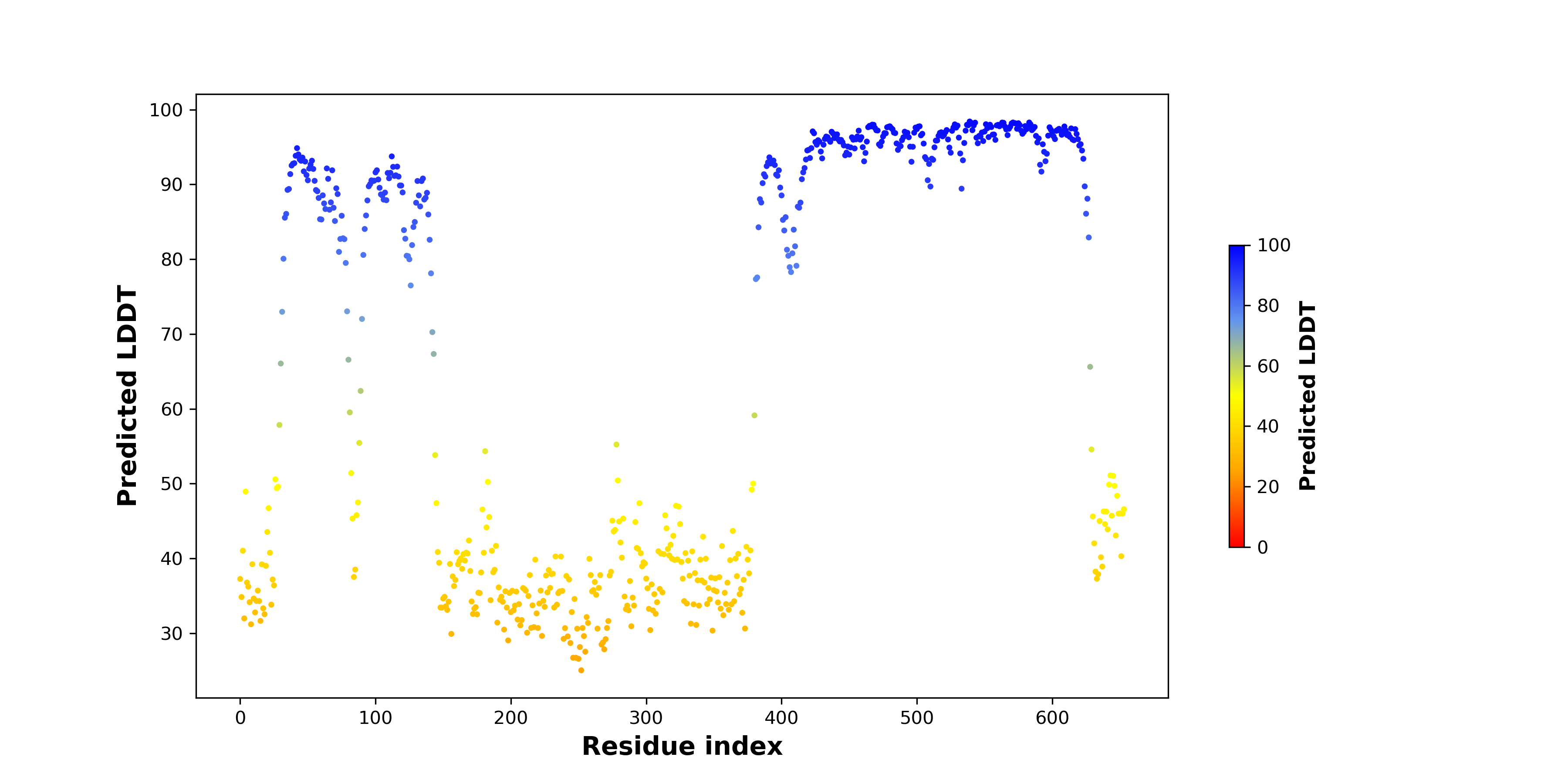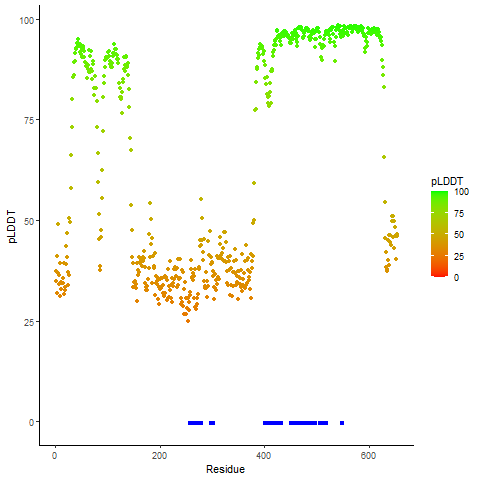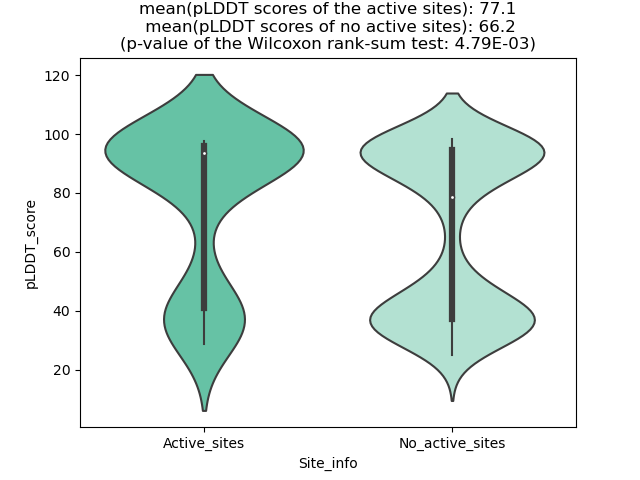| UTHEALTH HOME ABOUT SBMI A-Z WEBMAIL INSIDE THE UNIVERSITY |

|
|||||||
|
Fusion Protein:PAX5-KANK1 |
Fusion Protein Summary |
 Fusion gene summary Fusion gene summary |
| Fusion partner gene information | Fusion gene name: PAX5-KANK1 | FusionPDB ID: 62952 | FusionGDB2.0 ID: 62952 | Hgene | Tgene | Gene symbol | PAX5 | KANK1 | Gene ID | 5079 | 23189 |
| Gene name | paired box 5 | KN motif and ankyrin repeat domains 1 | |
| Synonyms | ALL3|BSAP | ANKRD15|CPSQ2|KANK | |
| Cytomap | 9p13.2 | 9p24.3 | |
| Type of gene | protein-coding | protein-coding | |
| Description | paired box protein Pax-5B-cell lineage specific activatorpaired box homeotic gene 5paired domain gene 5transcription factor PAX 5 | KN motif and ankyrin repeat domain-containing protein 1ankyrin repeat domain-containing protein 15kidney ankyrin repeat-containing protein | |
| Modification date | 20200313 | 20200313 | |
| UniProtAcc | Q02548 | Q14678 | |
| Ensembl transtripts involved in fusion gene | ENST ids | ENST00000358127, ENST00000377847, ENST00000377852, ENST00000377853, ENST00000446742, ENST00000520154, ENST00000522003, ENST00000523145, ENST00000523241, ENST00000414447, ENST00000520281, | ENST00000382293, ENST00000382297, ENST00000489369, ENST00000382303, |
| Fusion gene scores for assessment (based on all fusion genes of FusionGDB 2.0) | * DoF score | 15 X 15 X 7=1575 | 11 X 9 X 8=792 |
| # samples | 10 | 12 | |
| ** MAII score | log2(10/1575*10)=-3.97727992349992 possibly effective Gene in Pan-Cancer Fusion Genes (peGinPCFGs). DoF>8 and MAII<0 | log2(12/792*10)=-2.72246602447109 possibly effective Gene in Pan-Cancer Fusion Genes (peGinPCFGs). DoF>8 and MAII<0 | |
| Context (manual curation of fusion genes in FusionPDB) | PubMed: PAX5 [Title/Abstract] AND KANK1 [Title/Abstract] AND fusion [Title/Abstract] | ||
| Most frequent breakpoint (based on all fusion genes of FusionGDB 2.0) | |||
| Anticipated loss of major functional domain due to fusion event. | PAX5-KANK1 seems lost the major protein functional domain in Hgene partner, which is a CGC due to the frame-shifted ORF. PAX5-KANK1 seems lost the major protein functional domain in Hgene partner, which is a transcription factor due to the frame-shifted ORF. PAX5-KANK1 seems lost the major protein functional domain in Hgene partner, which is a tumor suppressor due to the frame-shifted ORF. PAX5-KANK1 seems lost the major protein functional domain in Tgene partner, which is a tumor suppressor due to the frame-shifted ORF. | ||
| * DoF score (Degree of Frequency) = # partners X # break points X # cancer types ** MAII score (Major Active Isofusion Index) = log2(# samples/DoF score*10) |
 Gene ontology of each fusion partner gene with evidence of Inferred from Direct Assay (IDA) from Entrez Gene ontology of each fusion partner gene with evidence of Inferred from Direct Assay (IDA) from Entrez |
| Partner | Gene | GO ID | GO term | PubMed ID |
| Tgene | KANK1 | GO:0010977 | negative regulation of neuron projection development | 19171758 |
| Tgene | KANK1 | GO:0030177 | positive regulation of Wnt signaling pathway | 16968744 |
| Tgene | KANK1 | GO:0030837 | negative regulation of actin filament polymerization | 17996375|18458160 |
| Tgene | KANK1 | GO:1900025 | negative regulation of substrate adhesion-dependent cell spreading | 19171758 |
| Tgene | KANK1 | GO:1900028 | negative regulation of ruffle assembly | 19171758 |
| Tgene | KANK1 | GO:2000393 | negative regulation of lamellipodium morphogenesis | 19171758 |
 Fusion gene breakpoints across PAX5 (5'-gene) Fusion gene breakpoints across PAX5 (5'-gene)* Click on the image to open the UCSC genome browser with custom track showing this image in a new window. |
 Fusion gene breakpoints across KANK1 (3'-gene) Fusion gene breakpoints across KANK1 (3'-gene)* Click on the image to open the UCSC genome browser with custom track showing this image in a new window. |
Top |
Fusion Gene Sample Information |
 Fusion gene information from FusionGDB2.0. Fusion gene information from FusionGDB2.0. |
 Fusion gene information from two resources (ChiTars 5.0 and ChimerDB 4.0) Fusion gene information from two resources (ChiTars 5.0 and ChimerDB 4.0)* All genome coordinats were lifted-over on hg19. * Click on the break point to see the gene structure around the break point region using the UCSC Genome Browser. |
| Source | Disease | Sample | Hgene | Hchr | Hbp | Hstrand | Tgene | Tchr | Tbp | Tstrand |
| ChimerKB3 | . | . | PAX5 | chr9 | 37002644 | - | KANK1 | chr9 | 730049 | + |
Top |
Fusion ORF Analysis |
 Fusion information from ORFfinder translation from full-length transcript sequence from FusionPDB. Fusion information from ORFfinder translation from full-length transcript sequence from FusionPDB. |
| Henst | Tenst | Hgene | Hchr | Hbp | Hstrand | Tgene | Tchr | Tbp | Tstrand | Seq length (transcript) | BP loci (transcript) | Predicted start (transcript) | Predicted stop (transcript) | Seq length (amino acids) |
| ENST00000358127 | PAX5 | chr9 | 37002644 | - | ENST00000382303 | KANK1 | chr9 | 730049 | + | 2910 | 679 | 75 | 2039 | 654 |
| ENST00000523241 | PAX5 | chr9 | 37002644 | - | ENST00000382303 | KANK1 | chr9 | 730049 | + | 2845 | 614 | 10 | 1974 | 654 |
| ENST00000520154 | PAX5 | chr9 | 37002644 | - | ENST00000382303 | KANK1 | chr9 | 730049 | + | 2845 | 614 | 10 | 1974 | 654 |
| ENST00000377852 | PAX5 | chr9 | 37002644 | - | ENST00000382303 | KANK1 | chr9 | 730049 | + | 2845 | 614 | 10 | 1974 | 654 |
| ENST00000377853 | PAX5 | chr9 | 37002644 | - | ENST00000382303 | KANK1 | chr9 | 730049 | + | 2845 | 614 | 10 | 1974 | 654 |
| ENST00000446742 | PAX5 | chr9 | 37002644 | - | ENST00000382303 | KANK1 | chr9 | 730049 | + | 2637 | 406 | 0 | 1766 | 588 |
| ENST00000377847 | PAX5 | chr9 | 37002644 | - | ENST00000382303 | KANK1 | chr9 | 730049 | + | 2835 | 604 | 0 | 1964 | 654 |
 DeepORF prediction of the coding potential based on the fusion transcript sequence of in-frame fusion genes. DeepORF is a coding potential classifier based on convolutional neural network by comparing the real Ribo-seq data. If the no-coding score < 0.5 and coding score > 0.5, then the in-frame fusion transcript is predicted as being likely translated. DeepORF prediction of the coding potential based on the fusion transcript sequence of in-frame fusion genes. DeepORF is a coding potential classifier based on convolutional neural network by comparing the real Ribo-seq data. If the no-coding score < 0.5 and coding score > 0.5, then the in-frame fusion transcript is predicted as being likely translated. |
| Henst | Tenst | Hgene | Hchr | Hbp | Hstrand | Tgene | Tchr | Tbp | Tstrand | No-coding score | Coding score |
Top |
Fusion Amino Acid Sequences |
 For individual full-length fusion transcript sequence from FusionPDB, we ran ORFfinder and chose the longest ORF among the all predicted ones. For individual full-length fusion transcript sequence from FusionPDB, we ran ORFfinder and chose the longest ORF among the all predicted ones. |
| >FusionGDB ID_FusionGDB isoform ID_FGname_Hgene_Hchr_Hbp_Henst_Tgene_Tchr_Tbp_Tenst_length(fusion AA) seq_BP >62952_62952_1_PAX5-KANK1_PAX5_chr9_37002644_ENST00000358127_KANK1_chr9_730049_ENST00000382303_length(amino acids)=654AA_BP=201 MDLEKNYPTPRTSRTGHGGVNQLGGVFVNGRPLPDVVRQRIVELAHQGVRPCDISRQLRVSHGCVSKILGRYYETGSIKPGVIGGSKPKV ATPKVVEKIAEYKRQNPTMFAWEIRDRLLAERVCDNDTVPSVSSINRIIRTKVQQPPNQPVPASSHSIVSTGSVTQVSSVSTDSAGSSYS ISGILGITSPSADTNKRKRDEGNYLGYTCKCGGLQSGSPLSSQTSQPEQEVGTSEGKPISSLDAFPTQEGTLSPVNLTDDQIAAGLYACT NNESTLKSIMKKKDGNKDSNGAKKNLQFVGINGGYETTSSDDSSSDESSSSESDDECDVIEYPLEEEEEEEDEDTRGMAEGHHAVNIEGL KSARVEDEMQVQECEPEKVEIRERYELSEKMLSACNLLKNTINDPKALTSKDMRFCLNTLQHEWFRVSSQKSAIPAMVGDYIAAFEAISP DVLRYVINLADGNGNTALHYSVSHSNFEIVKLLLDADVCNVDHQNKAGYTPIMLAALAAVEAEKDMRIVEELFGCGDVNAKASQAGQTAL MLAVSHGRIDMVKGLLACGADVNIQDDEGSTALMCASEHGHVEIVKLLLAQPGCNGHLEDNDGSTALSIALEAGHKDIAVLLYAHVNFAK -------------------------------------------------------------- >62952_62952_2_PAX5-KANK1_PAX5_chr9_37002644_ENST00000377847_KANK1_chr9_730049_ENST00000382303_length(amino acids)=654AA_BP=201 MDLEKNYPTPRTSRTGHGGVNQLGGVFVNGRPLPDVVRQRIVELAHQGVRPCDISRQLRVSHGCVSKILGRYYETGSIKPGVIGGSKPKV ATPKVVEKIAEYKRQNPTMFAWEIRDRLLAERVCDNDTVPSVSSINRIIRTKVQQPPNQPVPASSHSIVSTGSVTQVSSVSTDSAGSSYS ISGILGITSPSADTNKRKRDEGNYLGYTCKCGGLQSGSPLSSQTSQPEQEVGTSEGKPISSLDAFPTQEGTLSPVNLTDDQIAAGLYACT NNESTLKSIMKKKDGNKDSNGAKKNLQFVGINGGYETTSSDDSSSDESSSSESDDECDVIEYPLEEEEEEEDEDTRGMAEGHHAVNIEGL KSARVEDEMQVQECEPEKVEIRERYELSEKMLSACNLLKNTINDPKALTSKDMRFCLNTLQHEWFRVSSQKSAIPAMVGDYIAAFEAISP DVLRYVINLADGNGNTALHYSVSHSNFEIVKLLLDADVCNVDHQNKAGYTPIMLAALAAVEAEKDMRIVEELFGCGDVNAKASQAGQTAL MLAVSHGRIDMVKGLLACGADVNIQDDEGSTALMCASEHGHVEIVKLLLAQPGCNGHLEDNDGSTALSIALEAGHKDIAVLLYAHVNFAK -------------------------------------------------------------- >62952_62952_3_PAX5-KANK1_PAX5_chr9_37002644_ENST00000377852_KANK1_chr9_730049_ENST00000382303_length(amino acids)=654AA_BP=201 MDLEKNYPTPRTSRTGHGGVNQLGGVFVNGRPLPDVVRQRIVELAHQGVRPCDISRQLRVSHGCVSKILGRYYETGSIKPGVIGGSKPKV ATPKVVEKIAEYKRQNPTMFAWEIRDRLLAERVCDNDTVPSVSSINRIIRTKVQQPPNQPVPASSHSIVSTGSVTQVSSVSTDSAGSSYS ISGILGITSPSADTNKRKRDEGNYLGYTCKCGGLQSGSPLSSQTSQPEQEVGTSEGKPISSLDAFPTQEGTLSPVNLTDDQIAAGLYACT NNESTLKSIMKKKDGNKDSNGAKKNLQFVGINGGYETTSSDDSSSDESSSSESDDECDVIEYPLEEEEEEEDEDTRGMAEGHHAVNIEGL KSARVEDEMQVQECEPEKVEIRERYELSEKMLSACNLLKNTINDPKALTSKDMRFCLNTLQHEWFRVSSQKSAIPAMVGDYIAAFEAISP DVLRYVINLADGNGNTALHYSVSHSNFEIVKLLLDADVCNVDHQNKAGYTPIMLAALAAVEAEKDMRIVEELFGCGDVNAKASQAGQTAL MLAVSHGRIDMVKGLLACGADVNIQDDEGSTALMCASEHGHVEIVKLLLAQPGCNGHLEDNDGSTALSIALEAGHKDIAVLLYAHVNFAK -------------------------------------------------------------- >62952_62952_4_PAX5-KANK1_PAX5_chr9_37002644_ENST00000377853_KANK1_chr9_730049_ENST00000382303_length(amino acids)=654AA_BP=201 MDLEKNYPTPRTSRTGHGGVNQLGGVFVNGRPLPDVVRQRIVELAHQGVRPCDISRQLRVSHGCVSKILGRYYETGSIKPGVIGGSKPKV ATPKVVEKIAEYKRQNPTMFAWEIRDRLLAERVCDNDTVPSVSSINRIIRTKVQQPPNQPVPASSHSIVSTGSVTQVSSVSTDSAGSSYS ISGILGITSPSADTNKRKRDEGNYLGYTCKCGGLQSGSPLSSQTSQPEQEVGTSEGKPISSLDAFPTQEGTLSPVNLTDDQIAAGLYACT NNESTLKSIMKKKDGNKDSNGAKKNLQFVGINGGYETTSSDDSSSDESSSSESDDECDVIEYPLEEEEEEEDEDTRGMAEGHHAVNIEGL KSARVEDEMQVQECEPEKVEIRERYELSEKMLSACNLLKNTINDPKALTSKDMRFCLNTLQHEWFRVSSQKSAIPAMVGDYIAAFEAISP DVLRYVINLADGNGNTALHYSVSHSNFEIVKLLLDADVCNVDHQNKAGYTPIMLAALAAVEAEKDMRIVEELFGCGDVNAKASQAGQTAL MLAVSHGRIDMVKGLLACGADVNIQDDEGSTALMCASEHGHVEIVKLLLAQPGCNGHLEDNDGSTALSIALEAGHKDIAVLLYAHVNFAK -------------------------------------------------------------- >62952_62952_5_PAX5-KANK1_PAX5_chr9_37002644_ENST00000446742_KANK1_chr9_730049_ENST00000382303_length(amino acids)=588AA_BP=135 MDLEKNYPTPRTSRTGHGGVNQLGGVFVNGRPLPDVVRQRIVELAHQGVRPCDISRQLRVSHGCVSKILGRIIRTKVQQPPNQPVPASSH SIVSTGSVTQVSSVSTDSAGSSYSISGILGITSPSADTNKRKRDEGNYLGYTCKCGGLQSGSPLSSQTSQPEQEVGTSEGKPISSLDAFP TQEGTLSPVNLTDDQIAAGLYACTNNESTLKSIMKKKDGNKDSNGAKKNLQFVGINGGYETTSSDDSSSDESSSSESDDECDVIEYPLEE EEEEEDEDTRGMAEGHHAVNIEGLKSARVEDEMQVQECEPEKVEIRERYELSEKMLSACNLLKNTINDPKALTSKDMRFCLNTLQHEWFR VSSQKSAIPAMVGDYIAAFEAISPDVLRYVINLADGNGNTALHYSVSHSNFEIVKLLLDADVCNVDHQNKAGYTPIMLAALAAVEAEKDM RIVEELFGCGDVNAKASQAGQTALMLAVSHGRIDMVKGLLACGADVNIQDDEGSTALMCASEHGHVEIVKLLLAQPGCNGHLEDNDGSTA -------------------------------------------------------------- >62952_62952_6_PAX5-KANK1_PAX5_chr9_37002644_ENST00000520154_KANK1_chr9_730049_ENST00000382303_length(amino acids)=654AA_BP=201 MDLEKNYPTPRTSRTGHGGVNQLGGVFVNGRPLPDVVRQRIVELAHQGVRPCDISRQLRVSHGCVSKILGRYYETGSIKPGVIGGSKPKV ATPKVVEKIAEYKRQNPTMFAWEIRDRLLAERVCDNDTVPSVSSINRIIRTKVQQPPNQPVPASSHSIVSTGSVTQVSSVSTDSAGSSYS ISGILGITSPSADTNKRKRDEGNYLGYTCKCGGLQSGSPLSSQTSQPEQEVGTSEGKPISSLDAFPTQEGTLSPVNLTDDQIAAGLYACT NNESTLKSIMKKKDGNKDSNGAKKNLQFVGINGGYETTSSDDSSSDESSSSESDDECDVIEYPLEEEEEEEDEDTRGMAEGHHAVNIEGL KSARVEDEMQVQECEPEKVEIRERYELSEKMLSACNLLKNTINDPKALTSKDMRFCLNTLQHEWFRVSSQKSAIPAMVGDYIAAFEAISP DVLRYVINLADGNGNTALHYSVSHSNFEIVKLLLDADVCNVDHQNKAGYTPIMLAALAAVEAEKDMRIVEELFGCGDVNAKASQAGQTAL MLAVSHGRIDMVKGLLACGADVNIQDDEGSTALMCASEHGHVEIVKLLLAQPGCNGHLEDNDGSTALSIALEAGHKDIAVLLYAHVNFAK -------------------------------------------------------------- >62952_62952_7_PAX5-KANK1_PAX5_chr9_37002644_ENST00000523241_KANK1_chr9_730049_ENST00000382303_length(amino acids)=654AA_BP=201 MDLEKNYPTPRTSRTGHGGVNQLGGVFVNGRPLPDVVRQRIVELAHQGVRPCDISRQLRVSHGCVSKILGRYYETGSIKPGVIGGSKPKV ATPKVVEKIAEYKRQNPTMFAWEIRDRLLAERVCDNDTVPSVSSINRIIRTKVQQPPNQPVPASSHSIVSTGSVTQVSSVSTDSAGSSYS ISGILGITSPSADTNKRKRDEGNYLGYTCKCGGLQSGSPLSSQTSQPEQEVGTSEGKPISSLDAFPTQEGTLSPVNLTDDQIAAGLYACT NNESTLKSIMKKKDGNKDSNGAKKNLQFVGINGGYETTSSDDSSSDESSSSESDDECDVIEYPLEEEEEEEDEDTRGMAEGHHAVNIEGL KSARVEDEMQVQECEPEKVEIRERYELSEKMLSACNLLKNTINDPKALTSKDMRFCLNTLQHEWFRVSSQKSAIPAMVGDYIAAFEAISP DVLRYVINLADGNGNTALHYSVSHSNFEIVKLLLDADVCNVDHQNKAGYTPIMLAALAAVEAEKDMRIVEELFGCGDVNAKASQAGQTAL MLAVSHGRIDMVKGLLACGADVNIQDDEGSTALMCASEHGHVEIVKLLLAQPGCNGHLEDNDGSTALSIALEAGHKDIAVLLYAHVNFAK -------------------------------------------------------------- |
Top |
Fusion Protein Functional Features |
 Four levels of functional features of fusion genes Four levels of functional features of fusion genesGo to FGviewer search page for the most frequent breakpoint (https://ccsmweb.uth.edu/FGviewer/chr9:/chr9:) - FGviewer provides the online visualization of the retention search of the protein functional features across DNA, RNA, protein, and pathological levels. - How to search 1. Put your fusion gene symbol. 2. Press the tab key until there will be shown the breakpoint information filled. 4. Go down and press 'Search' tab twice. 4. Go down to have the hyperlink of the search result. 5. Click the hyperlink. 6. See the FGviewer result for your fusion gene. |
 |
 Main function of each fusion partner protein. (from UniProt) Main function of each fusion partner protein. (from UniProt) |
| Hgene | Tgene |
| PAX5 | KANK1 |
| FUNCTION: Transcription factor that plays an essential role in commitment of lymphoid progenitors to the B-lymphocyte lineage (PubMed:10811620, PubMed:27181361). Fulfills a dual role by repressing B-lineage inappropriate genes and simultaneously activating B-lineage-specific genes (PubMed:10811620, PubMed:27181361). In turn, regulates cell adhesion and migration, induces V(H)-to-D(H)J(H) recombination, facilitates pre-B-cell receptor signaling and promotes development to the mature B-cell stage (PubMed:32612238). Repression of the cohesin-release factor WAPL causes global changes of the chromosomal architecture in pro-B cells to facilitate the generation of a diverse antibody repertoire (PubMed:32612238). {ECO:0000269|PubMed:10811620, ECO:0000269|PubMed:27181361, ECO:0000269|PubMed:32612238}.; FUNCTION: (Microbial infection) Plays an essential role in the maintenance of Epstein-Barr virus genome copy number within the host cell by promoting EBNA1/oriP-dependent binding and transcription (PubMed:31941781). Participates also in the inhibition of lytic EBV reactivation by modulating viral BZLF1 activity (PubMed:23678172). {ECO:0000269|PubMed:23678172, ECO:0000269|PubMed:31941781}. | FUNCTION: Involved in the control of cytoskeleton formation by regulating actin polymerization. Inhibits actin fiber formation and cell migration (PubMed:25961457). Inhibits RhoA activity; the function involves phosphorylation through PI3K/Akt signaling and may depend on the competetive interaction with 14-3-3 adapter proteins to sequester them from active complexes (PubMed:25961457). Inhibits the formation of lamellipodia but not of filopodia; the function may depend on the competetive interaction with BAIAP2 to block its association with activated RAC1 (PubMed:25961457). Inhibits fibronectin-mediated cell spreading; the function is partially mediated by BAIAP2. Inhibits neurite outgrowth. Involved in the establishment and persistence of cell polarity during directed cell movement in wound healing. In the nucleus, is involved in beta-catenin-dependent activation of transcription. Potential tumor suppressor for renal cell carcinoma. Regulates Rac signaling pathways (PubMed:25961457). {ECO:0000269|PubMed:16968744, ECO:0000269|PubMed:18458160, ECO:0000269|PubMed:19171758, ECO:0000269|PubMed:22084092, ECO:0000269|PubMed:25961457}. |
 Retention analysis result of each fusion partner protein across 39 protein features of UniProt such as six molecule processing features, 13 region features, four site features, six amino acid modification features, two natural variation features, five experimental info features, and 3 secondary structure features. Here, because of limited space for viewing, we only show the protein feature retention information belong to the 13 regional features. All retention annotation result can be downloaded at * Minus value of BPloci means that the break pointn is located before the CDS. Retention analysis result of each fusion partner protein across 39 protein features of UniProt such as six molecule processing features, 13 region features, four site features, six amino acid modification features, two natural variation features, five experimental info features, and 3 secondary structure features. Here, because of limited space for viewing, we only show the protein feature retention information belong to the 13 regional features. All retention annotation result can be downloaded at * Minus value of BPloci means that the break pointn is located before the CDS. |
| - Retained protein feature among the 13 regional features. |
| Partner | Gene | Hbp | Tbp | ENST | Strand | BPexon | TotalExon | Protein feature loci | *BPloci | TotalLen | Protein feature | Protein feature note |
| - Not-retained protein feature among the 13 regional features. |
| Partner | Gene | Hbp | Tbp | ENST | Strand | BPexon | TotalExon | Protein feature loci | *BPloci | TotalLen | Protein feature | Protein feature note |
Top |
Fusion Protein Structures |
 PDB and CIF files of the predicted fusion proteins PDB and CIF files of the predicted fusion proteins * Here we show the 3D structure of the fusion proteins using Mol*. AlphaFold produces a per-residue confidence score (pLDDT) between 0 and 100. Model confidence is shown from the pLDDT values per residue. pLDDT corresponds to the model’s prediction of its score on the local Distance Difference Test. It is a measure of local accuracy (from AlphfaFold website). To color code individual residues, we transformed individual PDB files into CIF format. |
| Fusion protein PDB link (fusion AA seq ID in FusionPDB) | Hgene | Hchr | Hbp | Hstrand | Tgene | Tchr | Tbp | Tstrand | AA seq | Len(AA seq) |
| PDB file (452) >>>452.pdbFusion protein BP residue: 135 CIF file (452) >>>452.cif | PAX5 | chr9 | 37002644 | - | KANK1 | chr9 | 730049 | + | MDLEKNYPTPRTSRTGHGGVNQLGGVFVNGRPLPDVVRQRIVELAHQGVR PCDISRQLRVSHGCVSKILGRIIRTKVQQPPNQPVPASSHSIVSTGSVTQ VSSVSTDSAGSSYSISGILGITSPSADTNKRKRDEGNYLGYTCKCGGLQS GSPLSSQTSQPEQEVGTSEGKPISSLDAFPTQEGTLSPVNLTDDQIAAGL YACTNNESTLKSIMKKKDGNKDSNGAKKNLQFVGINGGYETTSSDDSSSD ESSSSESDDECDVIEYPLEEEEEEEDEDTRGMAEGHHAVNIEGLKSARVE DEMQVQECEPEKVEIRERYELSEKMLSACNLLKNTINDPKALTSKDMRFC LNTLQHEWFRVSSQKSAIPAMVGDYIAAFEAISPDVLRYVINLADGNGNT ALHYSVSHSNFEIVKLLLDADVCNVDHQNKAGYTPIMLAALAAVEAEKDM RIVEELFGCGDVNAKASQAGQTALMLAVSHGRIDMVKGLLACGADVNIQD DEGSTALMCASEHGHVEIVKLLLAQPGCNGHLEDNDGSTALSIALEAGHK | 588 |
| 3D view using mol* of 452 (AA BP:135) | ||||||||||
 | ||||||||||
| PDB file (531) >>>531.pdbFusion protein BP residue: 201 CIF file (531) >>>531.cif | PAX5 | chr9 | 37002644 | - | KANK1 | chr9 | 730049 | + | MDLEKNYPTPRTSRTGHGGVNQLGGVFVNGRPLPDVVRQRIVELAHQGVR PCDISRQLRVSHGCVSKILGRYYETGSIKPGVIGGSKPKVATPKVVEKIA EYKRQNPTMFAWEIRDRLLAERVCDNDTVPSVSSINRIIRTKVQQPPNQP VPASSHSIVSTGSVTQVSSVSTDSAGSSYSISGILGITSPSADTNKRKRD EGNYLGYTCKCGGLQSGSPLSSQTSQPEQEVGTSEGKPISSLDAFPTQEG TLSPVNLTDDQIAAGLYACTNNESTLKSIMKKKDGNKDSNGAKKNLQFVG INGGYETTSSDDSSSDESSSSESDDECDVIEYPLEEEEEEEDEDTRGMAE GHHAVNIEGLKSARVEDEMQVQECEPEKVEIRERYELSEKMLSACNLLKN TINDPKALTSKDMRFCLNTLQHEWFRVSSQKSAIPAMVGDYIAAFEAISP DVLRYVINLADGNGNTALHYSVSHSNFEIVKLLLDADVCNVDHQNKAGYT PIMLAALAAVEAEKDMRIVEELFGCGDVNAKASQAGQTALMLAVSHGRID MVKGLLACGADVNIQDDEGSTALMCASEHGHVEIVKLLLAQPGCNGHLED NDGSTALSIALEAGHKDIAVLLYAHVNFAKAQSPGTPRLGRKTSPGPTHR | 654 |
| 3D view using mol* of 531 (AA BP:201) | ||||||||||
 | ||||||||||
Top |
pLDDT score distribution |
 pLDDT score distribution of the predicted wild-type structures of two partner proteins from AlphaFold2 pLDDT score distribution of the predicted wild-type structures of two partner proteins from AlphaFold2* AlphaFold produces a per-residue confidence score (pLDDT) between 0 and 100. |
PAX5_pLDDT.png |
 pLDDT score distribution of the predicted fusion protein structures from AlphaFold2 pLDDT score distribution of the predicted fusion protein structures from AlphaFold2* AlphaFold produces a per-residue confidence score (pLDDT) between 0 and 100. |
Top |
Ramachandran Plot of Fusion Protein Structure |
 Ramachandran plot of the torsional angles - phi (φ)and psi (ψ) - of the residues (amino acids) contained in this fusion protein peptide. Ramachandran plot of the torsional angles - phi (φ)and psi (ψ) - of the residues (amino acids) contained in this fusion protein peptide. |
| Fusion AA seq ID in FusionPDB and their Ramachandran plots |
| PAX5_KANK1_452.png |
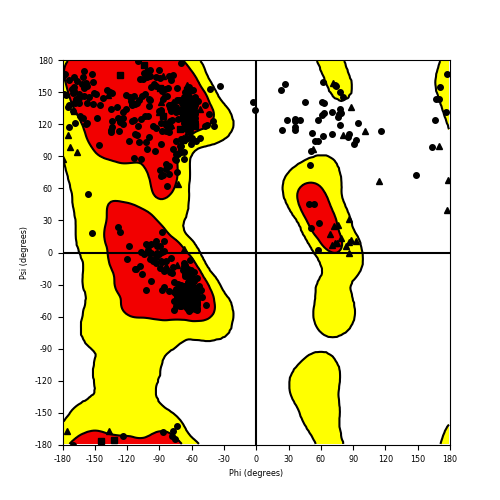 |
| PAX5_KANK1_531.png |
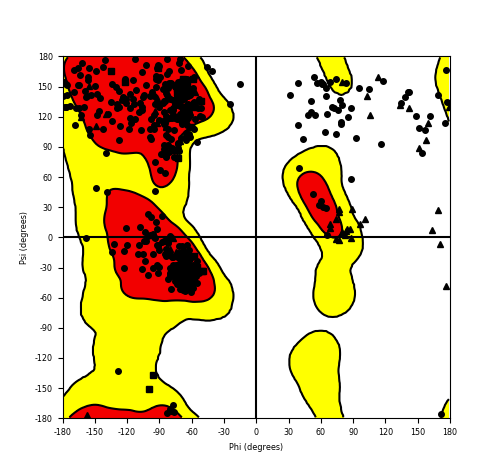 |
Top |
Potential Active Site Information |
 The potential binding sites of these fusion proteins were identified using SiteMap, a module of the Schrodinger suite. The potential binding sites of these fusion proteins were identified using SiteMap, a module of the Schrodinger suite. |
| Fusion AA seq ID in FusionPDB | Site score | Size | D score | Volume | Exposure | Enclosure | Contact | Phobic | Philic | Balance | Don/Acc | Residues |
| 452 | 0.9904 | 159 | 1.0123 | 444.185 | 0.6311 | 0.6805 | 0.8561 | 0.4701 | 1.0306 | 0.4562 | 0.5387 | Chain A: 16,18,19,20,25,26,27,28,29,30,42,45,46,50 ,51,52,56,61,62,63,64,66,67,69,70,71,72,73,74,76,3 88,392,417,418,419,421,422,423,424,425,426,455,459 ,460,461 |
| 531 | 1.011 | 374 | 1.043 | 1054.039 | 0.564 | 0.689 | 0.867 | 0.524 | 0.951 | 0.551 | 0.895 | Chain A: 258,259,260,262,263,264,266,267,269,271,2 72,274,275,276,277,279,298,299,300,301,302,402,408 ,409,414,417,418,421,422,425,426,429,430,431,432,4 51,454,455,458,459,460,461,462,463,464,470,473,474 ,475,476,477,478,479,488,490,492,493,494,495,496,5 07,508,509,510,511,512,514,515,518,548 |
Top |
Potentially Interacting Small Molecules through Virtual Screening |
 The FDA-approved small molecule library molecules were subjected to virtual screening using the Glide. The FDA-approved small molecule library molecules were subjected to virtual screening using the Glide. |
| Fusion AA seq ID in FusionPDB | ZINC ID | DrugBank ID | Drug name | Docking score | Glide gscore |
Top |
 Drug information from DrugBank of the top 20 interacting small molecules. Drug information from DrugBank of the top 20 interacting small molecules. |
| ZINC ID | DrugBank ID | Drug name | Drug type | SMILES | Drug group |
Top |
Biochemical Features of Small Molecules |
 ADME (Absorption, Distribution, Metabolism, and Excretion) of drugs using QikProp(v3.9) ADME (Absorption, Distribution, Metabolism, and Excretion) of drugs using QikProp(v3.9) |
| ZINC ID | mol_MW | dipole | SASA | FOSA | FISA | PISA | WPSA | volume | donorHB | accptHB | IP | Human Oral Absorption | Percent Human Oral Absorption | Rule Of Five | Rule Of Three |
Top |
Drug Toxicity Information |
 Toxicity information of individual drugs using eToxPred Toxicity information of individual drugs using eToxPred |
| ZINC ID | Smile | Surface Accessibility | Toxicity |
Top |
Fusion Protein-Protein Interaction |
 Go to ChiPPI (Chimeric Protein-Protein interactions) to see the chimeric PPI interaction in Go to ChiPPI (Chimeric Protein-Protein interactions) to see the chimeric PPI interaction in |
 Protein-protein interactors with each fusion partner protein in wild-type from validated records (BIOGRID-3.4.160) Protein-protein interactors with each fusion partner protein in wild-type from validated records (BIOGRID-3.4.160) |
| Gene | PPI interactors |
| PAX5 | TLE4, DAXX, RUNX1, MYB, ID3, EP300, TBP, RB1, MAPK1, KAT2B, CDKN1B, UBE3A, RAD52, HMGB3, HOXC8, MAPK9, NFYC, FBLN1, GRHL2, DTX2, CSNK2A1, UBE2I, CCNC, BCAS2, C1orf109, GNG13, ZMYM5, SEC14L4, RNF144B, OSGIN1, CIB3, SAE1, STAC, TLK2, HMBOX1, NGLY1, NEIL2, LONRF1, LDLRAP1, LARP4, UBXN7, ACOT12, CKS1B, KLHL38, HGS, CXorf38, KRTAP10-8, PNMA5, KRTAP9-3, UBXN2B, CDK3, BKRF1, HIST1H3A, PAX8, KLHL14, |
 Protein-protein interactors based on sequence similarity (STRING) Protein-protein interactors based on sequence similarity (STRING) |
| Gene | STRING network |
| PAX5 |  |
| KANK1 | 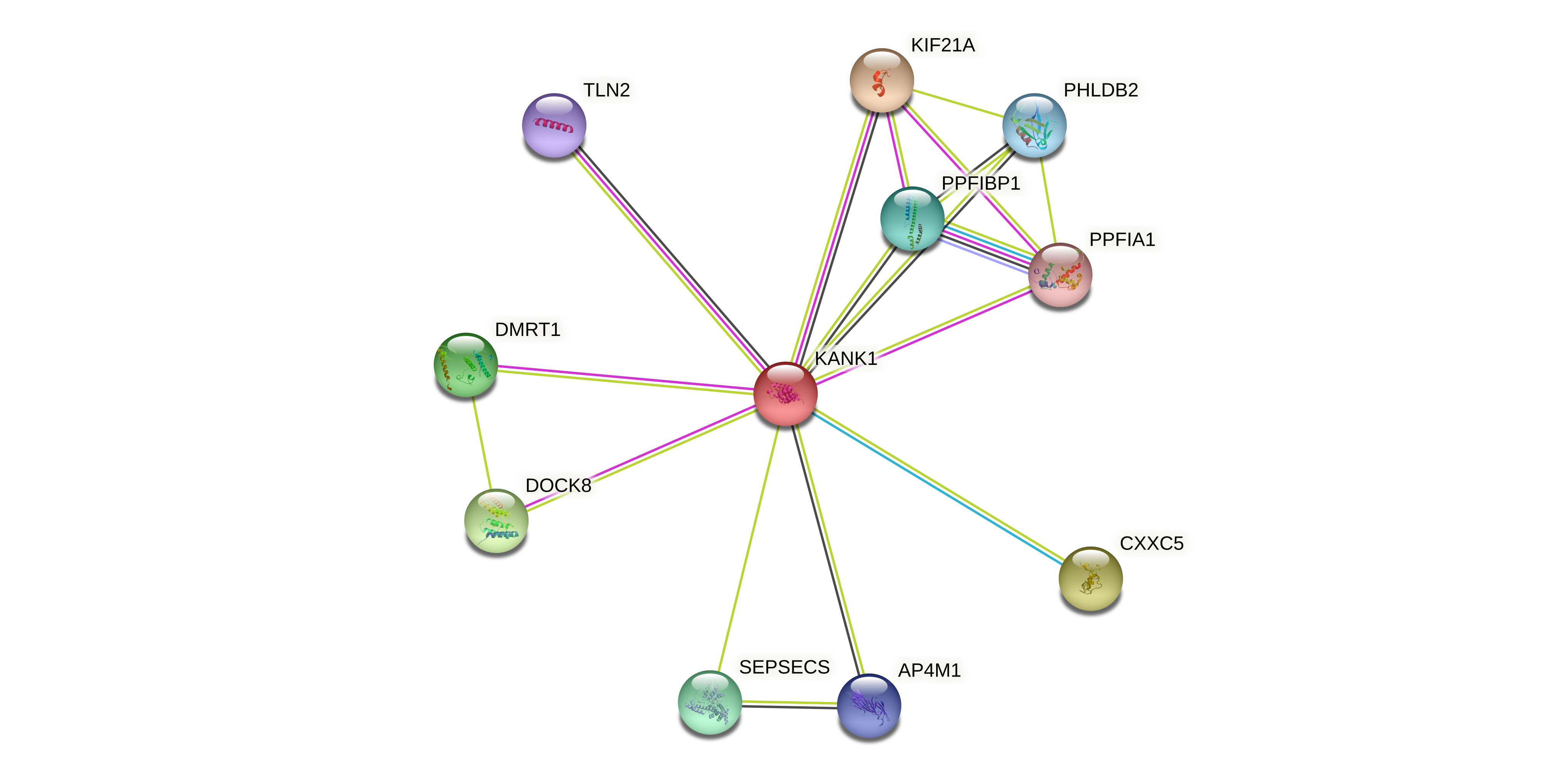 |
 - Retained interactions in fusion protein (protein functional feature from UniProt). - Retained interactions in fusion protein (protein functional feature from UniProt). |
| Partner | Gene | Hbp | Tbp | ENST | Strand | BPexon | TotalExon | Protein feature loci | *BPloci | TotalLen | Still interaction with |
 - Lost interactions due to fusion (protein functional feature from UniProt). - Lost interactions due to fusion (protein functional feature from UniProt). |
| Partner | Gene | Hbp | Tbp | ENST | Strand | BPexon | TotalExon | Protein feature loci | *BPloci | TotalLen | Interaction lost with |
Top |
Related Drugs to PAX5-KANK1 |
 Drugs used for this fusion-positive patient. Drugs used for this fusion-positive patient. (Manual curation of PubMed, 04-30-2022 + MyCancerGenome) |
| Hgene | Tgene | Drug | Source | PMID |
Top |
Related Diseases to PAX5-KANK1 |
 Diseases that have this fusion gene. Diseases that have this fusion gene. (Manual curation of PubMed, 04-30-2022 + MyCancerGenome) |
| Hgene | Tgene | Disease | Source | PMID |
 Diseases associated with fusion partners. Diseases associated with fusion partners. (DisGeNet 4.0) |
| Partner | Gene | Disease ID | Disease name | # pubmeds | Source |
| Hgene | PAX5 | C0006413 | Burkitt Lymphoma | 4 | ORPHANET |
| Hgene | PAX5 | C1292769 | Precursor B-cell lymphoblastic leukemia | 4 | ORPHANET |
| Hgene | PAX5 | C0023485 | Precursor B-Cell Lymphoblastic Leukemia-Lymphoma | 2 | CTD_human |
| Hgene | PAX5 | C1961102 | Precursor Cell Lymphoblastic Leukemia Lymphoma | 2 | CGI;CTD_human;UNIPROT |
| Hgene | PAX5 | C0023452 | Childhood Acute Lymphoblastic Leukemia | 1 | CTD_human |
| Hgene | PAX5 | C0023453 | L2 Acute Lymphoblastic Leukemia | 1 | CTD_human |
| Hgene | PAX5 | C1535926 | Neurodevelopmental Disorders | 1 | CTD_human |
| Tgene | KANK1 | C0001973 | Alcoholic Intoxication, Chronic | 1 | PSYGENET |
| Tgene | KANK1 | C0008370 | Cholestasis | 1 | CTD_human |
| Tgene | KANK1 | C0023893 | Liver Cirrhosis, Experimental | 1 | CTD_human |
| Tgene | KANK1 | C0027726 | Nephrotic Syndrome | 1 | GENOMICS_ENGLAND |
| Tgene | KANK1 | C2751938 | Cerebral Palsy, Spastic Quadriplegic, 1 | 1 | ORPHANET |
| Tgene | KANK1 | C2752061 | Cerebral Palsy, Spastic Quadriplegic, 2 | 1 | CTD_human;GENOMICS_ENGLAND |

